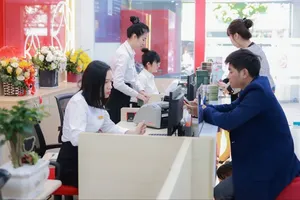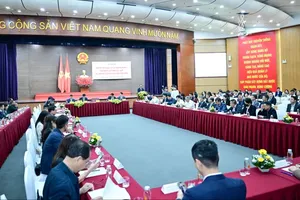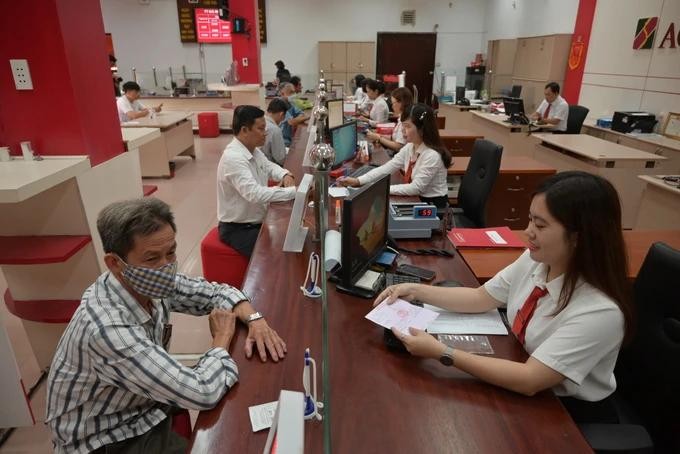
A strong recovery in credit demand is evident in the 3.93 percent system-wide credit growth achieved by the end of quarter 1- 2025, which is 2.5 times higher than last year and creates positive momentum for the banking sector to reach its 16 percent credit growth target for the year.
Lower interest rates, active disbursement
Since the start of the year, banks have channeled substantial credit, totaling trillions of Vietnamese dong, into key infrastructure sectors including airports, highways, and stations. Notable recent agreements include Agribank's credit facility of nearly VND3,300 billion with Vietnam Airports Corporation (ACV), Vietcombank's VND5,472 billion credit contract for the Lao Cai - Vinh Yen 500kV transmission line project, and TPBank's provision of VND2,500 billion in credit for the Huu Nghi - Chi Lang Expressway BOT project.
In addition to pumping credit and actively disbursing loans, banks have reduced lending interest rates. Nam A Bank Deputy General Director Vo Hoang Hai said that outstanding credit balance in the first quarter of 2025 reached nearly VND178,000 billion, up 6 percent compared to the beginning of the year in the context of falling interest rates.
To promote credit growth, Nam A Bank will continue to focus resources on implementing preferential credit packages. The bank has increased the scale of its seafood industry credit package from VND6,000 billion to VND10,000 billion, offering interest rates 1-2 percent lower than normal. Additionally, Nam A Bank has introduced a VND5,000 billion social housing loan package with a preferential interest rate of 6.1 percent per year for the first 5 years.
In the first quarter of 2025, ACB's credit grew by 3 percent, according to General Director Tu Tien Phat. The bank has proactively implemented various solutions to boost credit growth, including maintaining competitive interest rates, offering preferential home loan programs for young customers, improving online loan disbursement, and simplifying loan procedures to facilitate customer access to capital.
VIB Chairman Dang Khac Vy also said that the bank is ready to deploy a credit package of VND5,000-VND10,000 billion with preferential interest rates about 1 percent lower than the normal level, in order to accompany the State's key policies.
Deputy Director Nguyen Duc Lenh of the State Bank of Vietnam (SBV) Region 2 Branch, reported that the total outstanding credit balance in the area reached nearly VND4 trillion by the end of the first quarter of 2025. This represents a 1.39 percent increase from the end of 2024 and an 11.82 percent rise compared to the same period last year.
According to Mr. Lenh, this is a high growth rate compared to the same period two years ago; for instance, it increased by 0.96 percent in 2024 and by 1.25 percent in 2023. Credit in the first quarter of Ho Chi Minh City improved due to the industries and sectors of processing and manufacturing; construction; agriculture, forestry; transportation and warehousing with a growth rate of over 1.5 percent.
The SBV Region 2 Branch reports that the strengthening markets for goods, real estate, and consumer spending are driving effective credit growth in Ho Chi Minh City during the first quarter and beyond.
SBV requires promoting lending for infrastructure, digital technology
The State Bank of Vietnam (SBV) has been actively guiding credit institutions to expand lending since the start of the year. These directives have emphasized the development of growth strategies while also mandating stable deposit rates to ensure consistent lending rates, thereby providing crucial support to businesses.
At the regular government meeting in March 2025, SBV leaders said that the interest rate maintained at a low level for a long time has been effective. Stable interest rate has become one of the important driving forces to help increase credit growth in the banking system.
The banking system has raised the mobilization interest rate by just 0.08 percent, while simultaneously lowering the lending interest rate by 0.4 percent through the end of 2024. This move is an effort to support the economy.
In the current context, economic experts say that the export sector is being affected by tax policies due to a lack of awareness. Therefore, to achieve this year's GDP growth target of 8 percent or more, promoting infrastructure investment is one of the important solutions.
The State Bank of Vietnam said that commercial banks are currently registering to participate in a VND500,000 billion credit package for businesses investing in infrastructure and digital technology. This is a preferential interest rate credit package that the Government has directed the State Bank of Vietnam to build to support businesses investing in infrastructure and digital technology, encouraging investment for growth and releasing social energy sources.
According to the State Bank of Vietnam, this credit initiative primarily leverages resources mobilized from rural areas. Credit institutions are tasked with strategically allocating their capital to facilitate appropriate lending. The preferential interest rate offered within this package may be reduced by 1 percent to 2 percent compared to prevailing standard lending rates.
The development of credit packages will prioritize the resources of each bank, ensuring appropriate standards to support businesses, effectively promote capital resources while still ensuring safe operations and avoiding detection of bad debts.


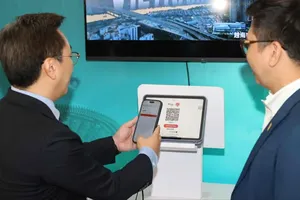




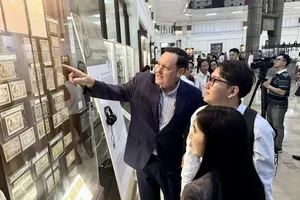


)

)


